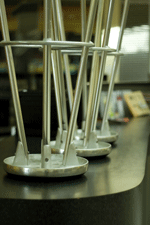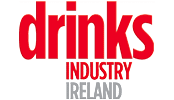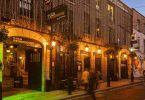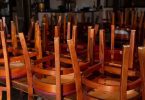The Irish pub and the new market realities

Falling drink sales have been blamed for the much-publicised troubles of the pub trade but is this the whole story?
One of the very high-profile casualties of our current economic crisis has been the pub trade with a number of large pub chains going into examinership, receivership and liquidation. Prominent Dublin chains such as Capital Bars, one of the biggest players on the Dublin pub scene which operated five superpubs and employed more than 300 people, was one notable example. The Thomas Read Group, which operated 22 bars and restaurants and employed 400 people, was another. These well-known companies were not the only casualties, however, with many other small pubs closing down quietly around the country.
Undoubtedly, drink sales have been falling for a number of years which made it harder for pubs to make a viable profit but, arguably, this was not the main tipping point. That hinged on high property prices and the inability to service large bank borrowings taken out to purchase those expensive properties.
Decline in the Number of Pubs
Information from the Revenue Commissioners indicates that the number of pub licences on issue reduced by 1,000 between 2002 and 2008, from a total of 9,896 to 8,867, a drop of 10 per cent.
More recently, a report by the Drinks Industry Group of Ireland (DIGI) based on a survey of publicans across the country found that approximately 1,500 pubs, clubs, hotels and restaurants have shut their doors in the past five years. Their evidence also suggested that the decline has accelerated in the past 18 months.
This decline is not unique to Ireland however and Britain has experienced a similar trend. The British Beer and Pub Association says that the number of pubs has fallen from 61,000 a decade ago to 54,818 by the end of last year, a drop of 10 per cent in total or one per cent per annum, which is very similar to Ireland. Apparently, for the first time ever, there are now more supermarkets and convenience stores (55,854) than pubs in Great Britain.
In direct contrast to the declining pub numbers has been a large increase in the number of other outlets selling alcoholic drink.
For many years the number of on-trade licences was significantly higher than off- licence outlets in Ireland, reflecting our traditional ‘pub’ culture. Restrictions with regard to off-trade licences relaxed in recent years however, with the result that many supermarkets, convenience stores and petrol forecourts now sell alcohol too. Growth in numbers has also come from the retail discounters (Aldi and Lidl) as well as the appearance of specialist chains such as O’Brien’s, Molloy’s and Galvin’s.
The result of all this activity has been that the total number of off-licence outlets has grown dramatically, almost doubling in the period from 2002 to 2008. There were 5,205 off-licences issued in 2008 (1,487 full off-licences and 3,718 wine off-licences), compared to 2,831 in 2002 (808 full off-licences and 2,023 wine off-licences). The number of wine licences issued to restaurants has stayed more or less static over this time.
Based on this expansion, it is not surprising to find that the off-licence share of alcohol sales has also increased over this time. In 2001, 83 per cent of alcohol sales were thorugh pubs but this had reduced to 63 per cent by 2007 and further again in 2008 — some saying to about 50-50.
Drink Sales over the past decade
There is no doubt that the volume of business being done in Irish pubs has been declining steadily over the past decade and this downward trend was not even interrupted by the boom years of the Celtic Tiger. Official figures from the CSO show that the volume of bar sales decreased by 25 per cent from 2000 to 2009, equivalent to a reduction of 2.5 per cent per annum. Admittedly, the greatest part of this decline occurred in 2008 and 2009 — sales volume was down seven per cent in 2008 and 8.4 per cent for the year 2009.
The decline in sales volume became noticeable from 2003, influenced by factors such as the introduction of penalty points (October 31st, 2002), random breath-testing (December 1st, 2003) and the smoking ban (March 29th, 2004). Sales actually decreased by eight per cent in volume from 2002 to 2005 (2.7 per cent per year) and 1.5 per cent in value (0.5 per cent per year). These decreases do not sound too significant until one considers that personal incomes rose by 14 per cent over the same three years and given a one-to-one elasticity, alcohol sales would have been expected to mirror this growth.
Another factor influencing the pattern of alcohol consumption has been the changing profile of the Irish consumer base. Immigration has had an impact, especially from the Eastern part of Europe. The immigrant community has not embraced the Irish pub culture as much as a socialising at home tendency (which includes a different preference in alcohol products). Recent data from ACNielsen shows evidence of this in a marked increase in sales of private label vodka.
Cross-border shopping has been another contributory factor with alcohol being one of the main products purchased. According to a recent CSO survey on cross-border shopping, 44 per cent of households who shopped in Northern Ireland bought alcohol on their most recent trip, making it the second most common purchase after food. They spent €32 on alcohol out of an average spend of €286 which, grossed up, amounts to an average annual spend of €48 million.
Sales of Pub Properties
Sales and re-sales of pubs have always been a significant part of the Irish commercial property market and this sector experienced the same problems as the rest of the property market in the last few years. As the chart below shows, sales of pubs increased rapidly both in number and in value in the early part of this decade reaching an unprecedented level of €190 million in 2006. Since then they have fallen catastrophically with just three sales recorded in 2009.
The high property values of the boom years affected the market in two different ways. On the one hand, large pub groups such as Capital Bars and Thomas Read which were ambitious to expand further had to pay huge sums of money to buy pub properties which left them with a heavy debt burden that became unsupportable in the face of declining revenues and profits.
For example, Capital Bars owed €120 million to Anglo Irish Bank when placed in Examinership last year and recorded a pre-tax loss of €15.9 million in 2008 despite having a turnover of €39.9 million. The companies in the Thomas Read Group had a debt of €38 million leaving them with an excess of €26.7 million in liabilities over assets despite trading profitably on their core business.
On the other hand, small country pubs which were making very low and ever-reducing incomes saw an opportunity to sell out at a high price and realise a capital gain, perhaps providing a pension fund for the owners. Given that these small pubs represent the majority of pubs in this country, this motive probably accounts for a large proportion of the closures that have occurred.
Most of the premises offered for sale these days are on the instructions of Receivers. The well-known Globe/Rí Rá nightclub premises on South Great George’s Street (part of the Thomas Read Group) attracted considerable interest last year from a number of interested parties, with a preferred bidder eventually emerging from the competitive bidding process. The Madison in Rathmines and the Towers in Ballymun were two other pubs which were offered for sale during the year as a result of receiverships.
The Future for the Pub Trade
In the short-term, the pub trade has to work through the problems created by the property bubble with considerable problems still remaining to be solved. The prices of pub properties will have to adjust to a level that is consistent with the earnings potential of businesses in this sector and rents will also have to adjust in the same way. The unsustainable debt burden will also have to be solved perhaps with the help of NAMA.
Longer-term, publicans will have to adjust to the new realities of changing consumer lifestyles and increased competition from off-licence outlets. In a recent DIGI survey, 80 per cent of publicans said that they have undertaken measures to improve business. They have focused on the costs of running their premises, reducing overheads (including staff members) where possible, while at the same time increasing the attractiveness of their premises either through a better food offering or by other event-led initiatives.
In fact, many well-run pubs have adapted to fast-changing consumer demands and patterns with the result that the current economic downturn has had less impact on them than on those who failed to alter or enhance their business model. As can often happen in such a situation, some well-run, well-managed and well-organised licensed premises continue to trade well, while others are feeling the impact of changing consumer trends far more severely.
Increased competition is a feature that is here to stay and publicans will have to get used to competing with a larger number and type of outlets selling alcohol. The deregulation of drink sales in the off-trade has opened up the possibility of price competition and other types of marketing activity. The retail multiples – Tesco, Supervalu, Dunnes and Superquinn – have begun to offer promotions which have helped to increase off-trade sales, as have the rapid expansion of the discounters Aldi and Lidl. In addition, the availability of alcohol in convenience chains such as Centra, Spar and Londis have increased purchase opportunities which have also increased sales of alcohol for home consumption.
It is to be hoped that the pub trade will rise to the challenge of the new market realities and renew itself successfully because it is a very large business providing significant employment and making an important contribution to the exchequer and to tourism. Lest we forget its importance, it would do well to reflect on the fact that retail sales of alcohol amount to about €6.6 billion per annum currently, €2.15 billion of which goes to the Exchequer in excise and VAT; the industry supports 62,000 full-time job equivalents. These are contributions we cannot afford to lose in the current environment.
Professor Mary Lambkin is involved in the publication of the new Consumer Market Monitor on a quarterly basis on the Irish market.








